Hof 's-Gravenhage 13 september 2011, LJN BS 8925 (Benetton Group SpA tegen G-Star International B.V.)
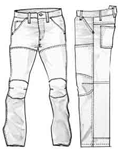 Met dank aan Niels Mulder, DLA Piper. In navolging van een groot aantal arresten van Hoge Raad en van het HvJ EG IEF 4745.
Met dank aan Niels Mulder, DLA Piper. In navolging van een groot aantal arresten van Hoge Raad en van het HvJ EG IEF 4745.
Merkenrecht. G-star is houdster van Benelux vormmerk voor een spijkerbroek genaamd 'Elwood'. Hof Amsterdam heeft bevestigd dat de aantrekkelijkheid - vormgeving en/of uiterlijk - in belangrijke mate de marktwaarde bepaalt.
Dit hof is van oordeel dat consumenten in het algemeen bij de aanschaf van voor algemeen gebruik bestemde (boven)kleding, zoals een spijkerbroek, hun keuze in belangrijke mate zullen laten afhangen van de vorm en het uiterlijk daarvan, van hoe het staat. De aantrekkelijkheid van het uiterlijk en de vorm zal voor een consument bij zijn/haar aankoopbeslissing zeker de doorslag zal geven, althans een belangrijke rol spelen als hij/zij moet kiezen uit kleding van hetzelfde of vergelijkbaar materiaal en dezelfde of vergelijkbare kwaliteit, kleur, prijs en herkomst.
Artikel 3, lid 1, onder e, derde streepje van de Merkenrichtlijn 89/104/EEG sluit merkbescherming uit van vormen die een wezenlijke waarde aan de waar geven en dat deze dus, kort gezegd, niet kunnen inburgeren. Hof bekrachtigd vonnis 6 maart 2002 in conventie en vernietigt het gedeelte in reconventie. Benelux-merkinschrijvingen worden vernietigd. Ieder draagt eigen kosten.
10. De Hoge Raad heeft vervolgens aan het Hof van Justitie EG de vraag gesteld of artikel 3, lid 1, onder e, derde streepje van de Merkenrichtlijn 89/104/EEG aldus moet worden uitgelegd dat de daarin vervatte uitsluiting toepassing mist indien voorafgaand aan de aanvrage om inschrijving voor het publiek de aantrekkingskracht van de desbetreffende vorm in overwegende mate bepaald is gaan worden door de bekendheid daarvan als onderscheidingsteken. Het Hof van Justitie heeft deze vraag ontkennend beantwoord. Het heeft daarmee bevestigd dat de oude BenGH-jurisprudentie van o.m. 14 april 1989, NJ 1989, 834 in zoverre achterhaald is door het Philips/Remmington-arrest van HvJEG 18 juni 2002, NJ 2003, 481, ook voor de uitsluiting van merkbescherming voor vormen die een wezenlijke waarde aan de waar geven en dat deze vormen dus, kort gezegd, niet kunnen inburgeren. De vragen van de Hoge Raad gingen niet over de inhoudelijke uitleg van de uitsluiting nu de Hoge Raad slechts heeft gevraagd of toetsing daaraan achterwege kon blijven als de vorm voor de inschrijvingsaanvraag aantrekkingskracht heeft verkregen door de bekendheid ervan als onderscheidingsteken.
13. Wat daarvan zij, het hof is, afgezien van het bovenstaande, van oordeel dat die vraag bevestigend dient te worden beantwoord. Het hof is van oordeel dat consumenten in het algemeen bij de aanschaf van voor algemeen gebruik bestemde (boven)kleding, zoals een spijkerbroek, hun keuze in belangrijke mate zullen laten afhangen van de vorm en het uiterlijk daarvan, van hoe het staat. Bij (de grote hoeveelheid) reclame die voor kleding gemaakt wordt - zoals de in deze procedure overgelegde reclame - , wordt vrijwel altijd de kleding getoond, vaak door een model dat de kleding zo aantrekkelijk mogelijk doet uitkomen en niet volstaan met een opsomming van de kenmerken van het kledingstuk, kennelijk omdat voor de aankoopbeslissing van de consument van belang is hoe het kledingstuk er uitziet en hoe het staat. In het algemeen zal een consument die de keuze heeft uit verschillende spijkerbroeken, kiezen voor een spijkerbroek die hij/zij mooi vindt (staan). Dit uitgangspunt valt (ook) af te leiden uit de, in punt 21 van de pleitnota van mr. Mulder in hoger beroep voor dit hof aangehaalde, eigen stellingen/uitingen van G-Star, inhoudende dat het uiterlijk van de Elwood-broek en de (combinatie van de) vijf in het Elwood-vormmerk genoemde kenmerken en het bijzondere kniestuk origineel en bijzonder zijn en dat de Elwood broek door haar bijzondere (stoere) uiterlijk zeer populair is. De aantrekkelijkheid van het uiterlijk en de vorm zal voor een consument bij zijn/haar aankoopbeslissing zeker de doorslag zal geven, althans een belangrijke rol spelen als hij/zij moet kiezen uit kleding van hetzelfde of vergelijkbaar materiaal en dezelfde of vergelijkbare kwaliteit, kleur, prijs en herkomst. De stelling dat ook andere factoren, zoals materiaal, kwaliteit, draagcomfort (hetgeen overigens ook weer met de vorm te maken kan hebben), kleur en herkomst bij de
aankoopbeslissing van belang zijn, kan er niet (voldoende) aan afdoen dat de aantrekkelijkheid van de vorm - de vormgeving en het uiterlijk - in belangrijke mate de marktwaarde bepaalt. Bovendien zijn deze kenmerken in zoverre niet relevant dat zij geen onderdeel uit maken van de waren waarvoor de vormen zijn gedeponeerd en ingeschreven.
14. Het bovenstaande brengt mee dat de vormmerken naar het oordeel van het hof uitsluitend bestaan uit een vorm die een wezenlijke waarde aan de waar geeft en dat de merkinschrijvingen op grond van artikel 1, lid 2, BMW juncto artikel 14A, lid 1, onder a, BMW nietig zullen worden verklaard, waarbij tevens de doorhaling van de inschrijvingen zal worden gelast. De reconventionele vorderingen van Benetton - waarin overeenkomstig de ten tijde van de inleidende dagvaarding geldende BMW nietigverklaring van de depots wordt gevorderd - komen derhalve in zoverre voor toewijzing in aanmerking. Deze beslissingen komen niet in aanmerking voor uitvoerbaarverklaring bij voorraad. Het hof zal derhalve het vonnis van de rechtbank, voor zover in reconventie gewezen, vernietigen en voormelde vorderingen alsnog toewijzen. De overigens gevorderde vergoeding van kosten op grond van artikel 6:96, lid 2, sub b en c, BW is door de rechtbank en het hof Amsterdam afgewezen, terwijl het daartegen gerichte middel niet tot cassatie heeft geleid (zie rechtsoverweging 3.14 van het tussenarrest van de Hoge Raad). Deze vordering zal dan ook worden afgewezen. G-star zal als de in reconventie grotendeels in het ongelijk gestelde partij worden veroordeeld in de kosten van het geding in eerste aanleg in reconventie. Benneton heeft vergoeding van de volledige proceskosten op de voet van artikel 1019h Rv gevorderd, voor
het eerst bij haar memorie na verwijzing. Er is hier sprake van een eiswijziging, waarvoor na cassatie en gelet op de in hoger beroep geldende twee-conclusie-regel geen plaats meer is. De kosten zullen dan ook worden begroot op basis van het normale liquidatietarief.
Lees het arrest hier (pdf / schone pdf / link).


 Merkenrecht. Gemeenschapsmerk. Aanvraag Gemeenschapswoordmerk. Oppositieprocedure. Twee of drie strepen. Het (niet) vertalen van essentiële elementen of het afleiden van type (in dit geval) driedimensionaal merk is van vitaal belang.
Merkenrecht. Gemeenschapsmerk. Aanvraag Gemeenschapswoordmerk. Oppositieprocedure. Twee of drie strepen. Het (niet) vertalen van essentiële elementen of het afleiden van type (in dit geval) driedimensionaal merk is van vitaal belang.  Met dank aan Niels Mulder,
Met dank aan Niels Mulder, 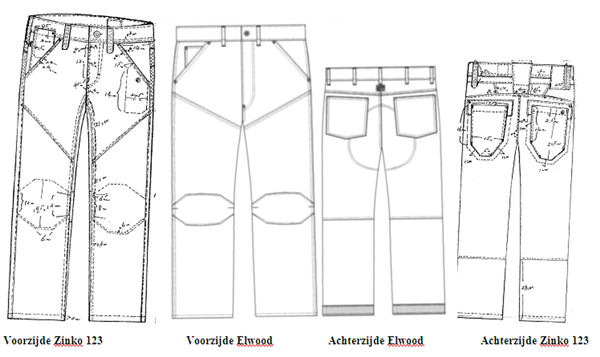 In navolging van Hof Amsterdam IEF
In navolging van Hof Amsterdam IEF 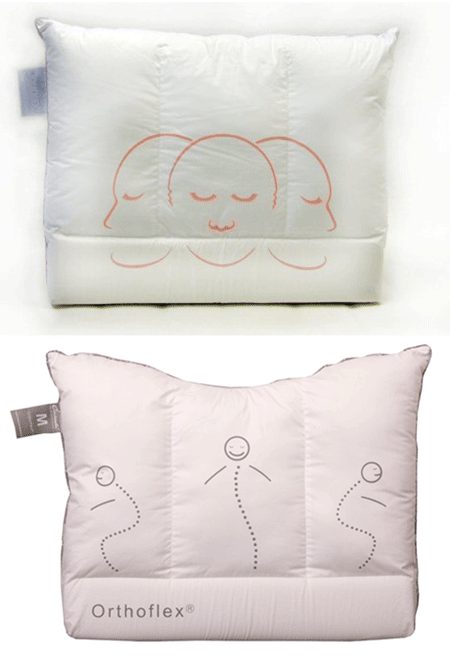 Met dank aan Joost Becker,
Met dank aan Joost Becker, 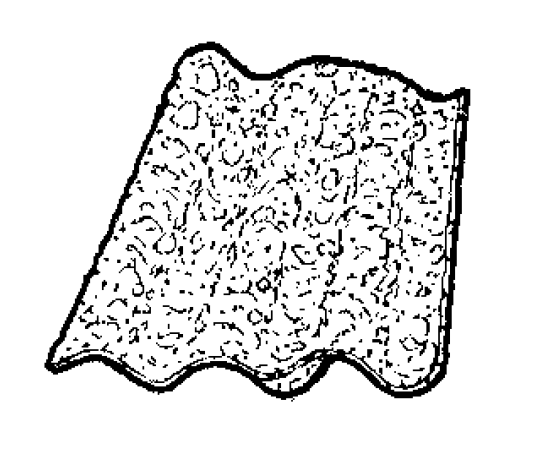 In't kort: Merkenrecht. Nietigheidsvordering Pepsico van het vormmerk voor ribbelvormige chips wegens gebrek aan onderscheidend vermogen en non usus en Heilung. Leng-d’Or is houdster van een internationale merkinschrijving voor een vormmerk (marque plastique) met Beneluxdesignatie. Voor vormmerken gelden strenge eisen aan het onderscheidend vermogen. Primaire vordering aangenomen 2.28(1)(b) BVIE al aangenomen. De rechter verklaart de nietigheid voor de Benelux en internationale registratie voorzover het is ingeschreven voor andere waren dan chips. Leng-d'Or veroordeelt in proceskosten conform overeenstemming €25.000.
In't kort: Merkenrecht. Nietigheidsvordering Pepsico van het vormmerk voor ribbelvormige chips wegens gebrek aan onderscheidend vermogen en non usus en Heilung. Leng-d’Or is houdster van een internationale merkinschrijving voor een vormmerk (marque plastique) met Beneluxdesignatie. Voor vormmerken gelden strenge eisen aan het onderscheidend vermogen. Primaire vordering aangenomen 2.28(1)(b) BVIE al aangenomen. De rechter verklaart de nietigheid voor de Benelux en internationale registratie voorzover het is ingeschreven voor andere waren dan chips. Leng-d'Or veroordeelt in proceskosten conform overeenstemming €25.000. Met gelijktijdige dank aan Caspar Brouwers,
Met gelijktijdige dank aan Caspar Brouwers, 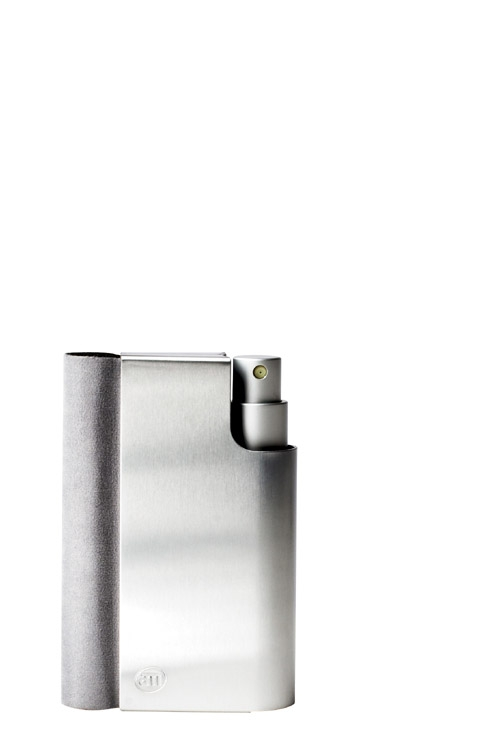 Procesrecht. Gedwongen tussenkomst: 118 Rv. Merkenrecht. Gemeenschapsmerk (houders van) schoonmaakproducten voor toetsenborden, beeldschermen en laptops [
Procesrecht. Gedwongen tussenkomst: 118 Rv. Merkenrecht. Gemeenschapsmerk (houders van) schoonmaakproducten voor toetsenborden, beeldschermen en laptops [ Met dank aan Sven Klos en Sjo-Anne Hoogcarspel,
Met dank aan Sven Klos en Sjo-Anne Hoogcarspel,  Met dank aan Niels Mulder,
Met dank aan Niels Mulder, 




















































































